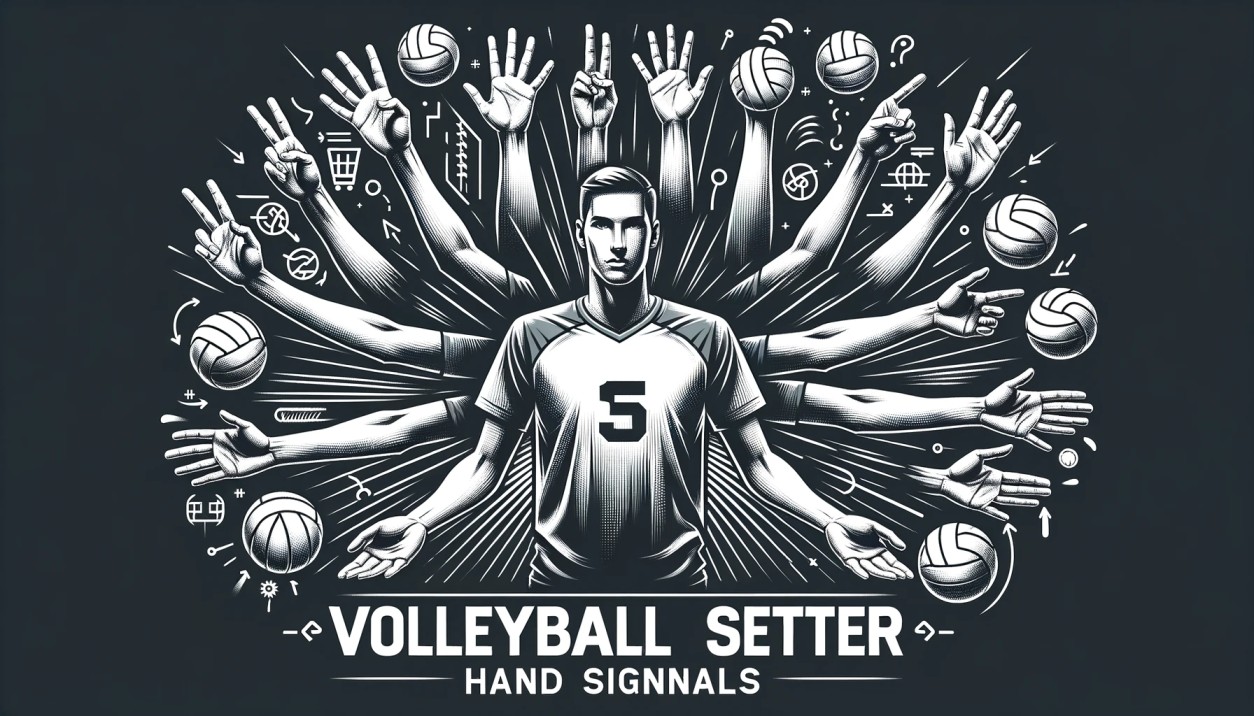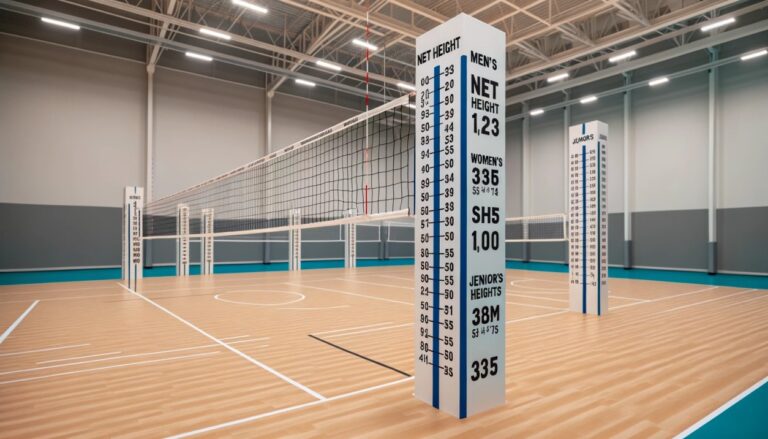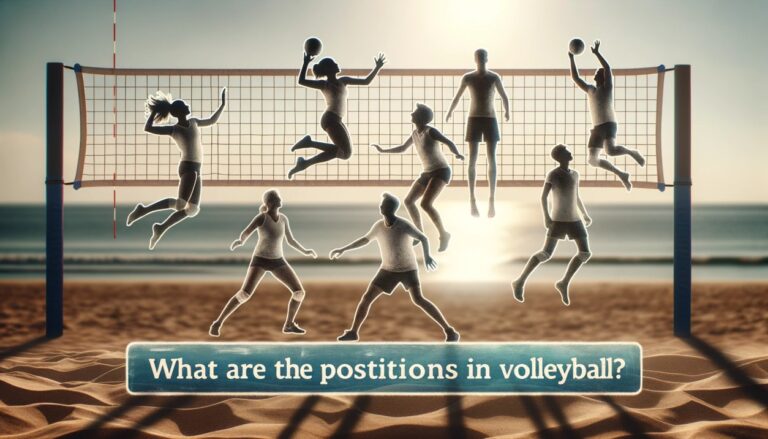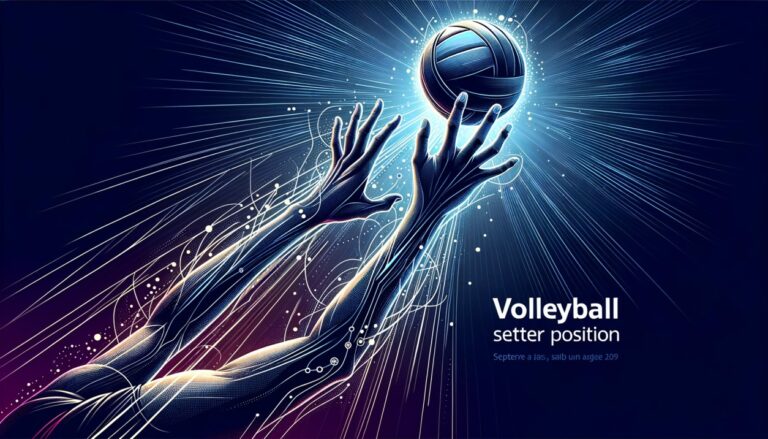Volleyball Setter Hand Signals Explained
Introduction of Volleyball Setter Hand Signals
In this article, complete information about Volleyball Setter Hand Signals is given. Ever wondered how volleyball players seem to read each other’s minds during a game? No, they’re not psychic. They’re just really good at using setter hand signals.
Understanding these signals can be a game changer literally. In this article, we’ll dive into the fascinating world of volleyball setter hand signals. We’ll cover the types of signals, why they’re so important, and even tackle some FAQs to make you a pro in no time. So, let’s get started!
The Role of a Setter in Volleyball
In volleyball, the setter is like the quarterback in football or the point guard in basketball. They’re the playmakers, the strategists, and the ones who set the ball for the attackers to spike it down. The setter’s role is to:
- Coordinate team plays
- Distribute the ball effectively
- Make quick decisions
Understanding the setter’s signals is crucial for every team member, not just the setter. It’s the secret sauce that can make your team more cohesive and, ultimately, more successful.
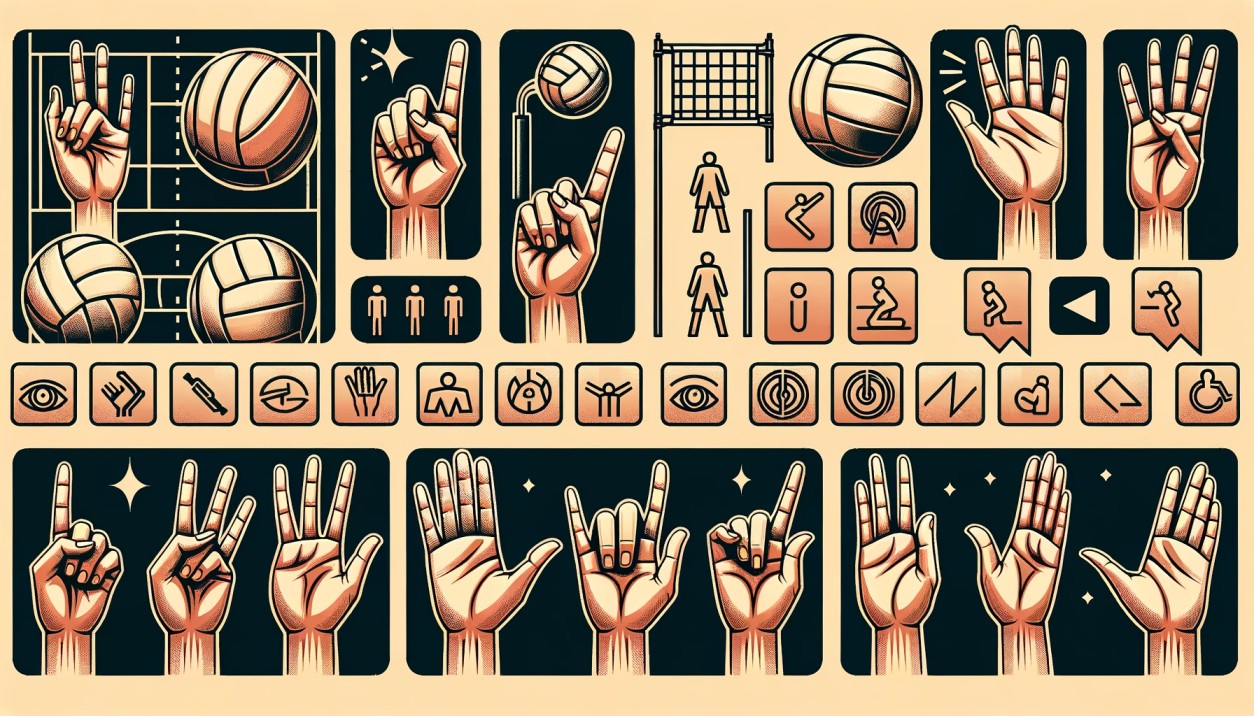
Why Hand Signals are Crucial
Imagine trying to shout instructions over the roar of the crowd and the squeaking of shoes on the court. Not very effective, right? That’s where non-verbal communication comes in. In a fast-paced game like volleyball, there’s no time to chit-chat. Hand signals allow for:
- Quick and clear communication
- Stealthy plays that the opposing team can’t easily catch
- A smoother flow of the game
Hand signals are the unsung heroes of volleyball, allowing for a level of coordination and strategy that verbal communication just can’t match. So, if you’re looking to up your game, understanding these signals is a must.
Types of Setter Hand Signals
Alright, let’s get down to the nitty-gritty. There are several types of setter hand signals that you’ll encounter on the court. We’ll break them down into three main categories:
- Open Hand vs Closed Hand
- Finger Numbers
- Thumb Gestures
Open Hand vs Closed Hand
An open hand usually signals that the setter is going for a high ball set. This is often used for outside hitters or when the setter wants to slow down the game a bit. On the flip side, a closed hand typically indicates a quick set, usually to the middle hitter. It’s like a secret code to keep the opposing team guessing.
Finger Numbers
The number of fingers a setter shows can indicate the type of play or even the player who should receive the ball. For example:
- One finger: A quick set to the middle hitter
- Two fingers: A ball set to the outside hitter
- Three fingers: A ball set behind the setter
Thumb Gestures
Thumbs aren’t just for hitchhiking; they’re also crucial in volleyball hand signals. Here’s how:
- Thumb up: Indicates a ball set to the back-row attacker.
- Thumb down: Signals a fake set to deceive the opponent.
- Thumb sideways: Usually a call for a ball set to the outside hitter but with a different strategy, like a tip or roll shot.
Advanced Signals: Beyond the Basics
In professional games, you’ll often see more complex signals. These can include combinations of the basic signals or even unique team-specific signals. For example, a closed hand followed by an open hand might indicate a fake quick set followed by a high ball set. The sky’s the limit when it comes to advanced signals, but remember, the key is to keep them simple enough that your team can understand them in the heat of the moment.
Common Mistakes to Avoid
- Inconsistency: Using different signals for the same play can confuse teammates.
- Complexity: Overcomplicating signals can slow down the game.
- Visibility: Make sure your team can see the signals; otherwise, they’re useless.
Volleyball is a fast-paced game that requires excellent communication between players. One of the most effective ways to communicate on the court is through hand signals. These signals are crucial for coordinating attacks and ensuring that everyone is on the same page. In this article, we will delve into the various types of hand signals used for different kinds of attacks in volleyball.
Left Side Attack Hand Signals
When you’re attacking from the left side, these are the hand signals you’ll commonly see:
- 3 4: Indicates a ball set to the outside hitter at the 4 position.
- 3 Hut: A higher ball set for the outside hitter.
- 3 Go: A faster ball set to the outside.
- 3 32/Rip: A ball set between the outside and middle hitter.
- 3 A (Back Row Attack): Signifies a back-row attack from the left side.
Right Side Attack Hand Signals
For attacks coming from the right side, these hand signals are often used:
- 3 Back 2: A ball set to the right side hitter at the 2 position but coming from the back.
- 3 5: A ball set to the right side hitter at the 5 position.
- 3 Red: A quick ball set to the right side hitter.
- 3 D (Back Row Attack): Indicates a back-row attack from the right side.
Middle Attack Hand Signals
When the attack is coming from the middle, these are the hand signals to look out for:
- 3 1: A quick ball set to the middle hitter.
- 3 Push 1: A pushed ball to the middle hitter.
- 3 3/Shoot: A fast ball set to the middle hitter.
- 3 Back 1: A ball set to the middle hitter but coming from the back.
- 3 Slide: A slide attack from the middle hitter.
- 3 2: A ball set to the middle hitter at the 2 position.
- 3 Pipe (Back Row Attack): A back-row attack from the middle.
- 3 B (Back Row Attack): Another type of back-row attack from the middle.
- 3 C (Back Row Attack): Yet another type of back-row attack from the middle.
Back Row Quick Attack (BIC)
- 2 BIC: Indicates a quick back-row attack, usually executed by the outside hitter.
Combination Play Hand Signals
For more complex plays involving multiple hitters, these hand signals are used:
- 3 X Combo Attack: A combination play involving multiple hitters.
- 3 Double Quick Combo Attack: A fast combination play involving two quick attacks.
Understanding these hand signals can significantly improve your game, whether you’re a player, a coach, or a fan. They help in executing plays more efficiently and allow for better team coordination. So the next time you’re on the court, keep an eye out for these signals to get the upper hand!
FAQs
What are the basic volleyball hand signals?
Open hand, closed hand, and finger numbers are the basics.
How do you communicate effectively as a setter?
Consistency and clarity in signals, along with eye contact and timing, are key.
Are hand signals standardized in volleyball?
While some signals are common, teams often develop their own variations.
What does the setter hand signal mean in volleyball?
In volleyball, the setter uses hand signals to communicate with teammates about the type of set they plan to execute. These signals can indicate whether the ball will be set high or low, to which hitter, and even what kind of play to run. Understanding these signals is crucial for effective team play.
How do you read a volleyball setter?
Reading a volleyball setter involves paying close attention to their hand signals, eye contact, and body language. The setter will usually give signals behind their back before the serve to indicate the type of play. Teammates must quickly interpret these signals to prepare for the play.
Why do setters give signals?
Setters give signals to coordinate plays and strategies with their teammates. In a fast-paced game like volleyball, verbal communication is often impractical. Hand signals provide a quick and discreet way to communicate, allowing the team to execute complex plays effectively.
What does 2 fingers in volleyball mean?
When a setter shows two fingers, it usually means that the ball will be set to the outside hitter. This is a common signal and is widely understood in the sport, although variations can exist between teams.
Is there 1 or 2 setters in volleyball?
The number of setters in a volleyball team can vary depending on the formation. In a 5-1 formation, there is one setter, while in a 6-2 formation, there are two setters. Each formation has its advantages and disadvantages, and the choice often depends on the team’s strategy and the skill set of the players.
How do you become a smart setter in volleyball?
Becoming a smart setter involves more than just technical skill. It requires:
- Quick decision-making
- Excellent court awareness
- Understanding of each teammate’s strengths and weaknesses
- Ability to read the opposing team’s defense
How do you teach a setter?
Teaching a setter involves both technical training and strategic understanding. Key points include:
- Proper hand positioning
- Footwork
- Timing
- Communication skills
Drills and real-game practice are essential for honing these skills.
How do you tell where the setter will set?
Reading where a setter will set involves observing their hand signals, eye contact, and body positioning. Experienced players can also pick up on subtle cues like the setter’s shoulder angle and the speed of their approach to the ball.
How do you train a volleyball setter?
Training a volleyball setter involves a combination of drills, game simulations, and mental training. Drills focus on hand positioning, footwork, and ball control, while game simulations help the setter practice decision-making and team coordination.
Where should the hands be on a volleyball setter?
The hands of a volleyball setter should form a “window” above the forehead, with the fingers spread wide but relaxed. This positioning allows for better ball control and a wider range of setting options.
What is a setter called in volleyball?
In volleyball, the setter is often referred to simply as the “setter.” They may also be called the “playmaker” due to their role in coordinating the team’s offensive plays.
Tips for Effective Communication
- Eye Contact: Make sure you lock eyes with the intended receiver of the ball.
- Timing: Signals should be given well before the serve to allow time for teammates to prepare.
- Non-Hand Signals: Facial expressions and body language can also be effective ways to communicate.
Conclusion
Understanding setter hand signals is like learning the secret language of volleyball. It can significantly improve your game and make you a more valuable player on any team.
So, what are you waiting for? Get out there, practice these signals, and watch your game reach new heights!
